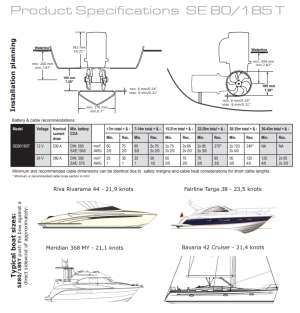mattnj
Well-known member
Hi.
Having a Thruster installed over winter... Jeanneau Sun Fast 40, single hand a fair bit. Probably 65kg variable speed thruster. 300amps?
Currently has beefy cables up to bow for windlass...
What's the best solution... AGM battery up the front and connect windlass and thruster to that, and directly connected to existing house battery? (Lead not AGM)
Although I may change house to lithium at some point... So is a b2b better, and if so what current charger do I need?
Or any other better way....?
Thanks
Having a Thruster installed over winter... Jeanneau Sun Fast 40, single hand a fair bit. Probably 65kg variable speed thruster. 300amps?
Currently has beefy cables up to bow for windlass...
What's the best solution... AGM battery up the front and connect windlass and thruster to that, and directly connected to existing house battery? (Lead not AGM)
Although I may change house to lithium at some point... So is a b2b better, and if so what current charger do I need?
Or any other better way....?
Thanks


